You've done it all — Thailand, Indo, the Great Barrier Reef, even the Maldives. What's next on your diving bucket list? Here's are a few of the world's best secret dive spots to get you started.
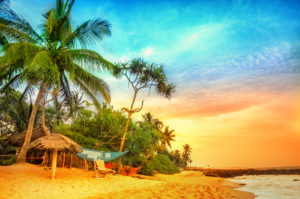
Sri Lanka
With untouched, white beaches and clear water, Sri Lanka is a secret gem in the diving world.
Where is it: Sri Lanka lays in the Bay of Bengal, 18 miles (31 km) off the southeast coast of India and across the Andaman sea from Thailand.
What makes it special: With pristine white beaches and clear water, Sri Lanka is a hidden gem. There are lots of diveable wrecks, the most famous is the HMS Hermes — the world's first purpose-built aircraft carrier — which went down in 1942 as a result of a Japanese air attack. The Hermes is suitable only for experienced and technical divers, sitting between 144 and 180 feet (44 to 55 m).
Marine life includes blue whales, sperm whales, manta rays, dolphins, reef sharks and an abundance of colorful tropical fish. Snorkeling trips are possible to see both blue whales and sperm whales as well.
Details: There is amazing diving year-round, and an abundance of dive sites make it an ideal dive destination for both beginners and experienced divers. Water temperature ranges between 79 to 86 F (26 to 30 C).
When to go: Diving on the west coast is best from November to April, while the east coast is better from May to October.
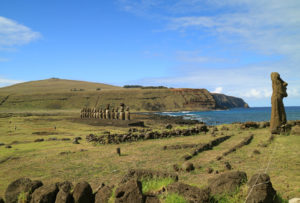
Easter Island
Easter Island, called Rapa Nui by its Polynesian inhabitants, is most well-known for the incredible Moai statues that dot the landscape. And although diving might not be the first thing you think of when you consider a visit, it should definitely be on your radar. Visibility can be an astonishing 230 feet (70 m) and with average water temperatures of between 64 to 79 F (18 to 26 C), you have a recipe for mind-blowing diving.
Where is it: Easter Island, a Chilean territory, is located in the Pacific Ocean between Chile and Tahiti, 2,300 miles (3,700 km) west of Chile.
What makes it special: There's 230-foot visibility — need we say more?! While there isn't an abundance of fish life, a large portion of it is endemic to the island, which makes the diving here even more unique.
In Hanga Roa Bay at around 59 feet (18 m), you can find Porites lobata coral that can reach diameters of up to 16 feet (5 m). You will also find many sea turtles and some tropical fish here.
The underwater topography around Easter Island is interesting as well, with many caves, arches, cliffs, lava platforms and even an underwater Moai to examine at around 72 feet (22 m). Other popular dive sites are Motu Nui, Motu Kao Kao and Motu Iti.
Details: Easter Island offers breathtaking diving for beginners and more experienced divers alike. LATAM is the only airline that flies to Easter Island with daily flights from Santiago, Chile, and one per week from Tahiti.
When to go: September to May. Diving conditions are generally better during this time as rough waters can limit the dive sites accessible during the summer. For your best bet at exceptional visibility, avoid traveling to Easter Island from May through July and October as these are the rainy months. Water temperature stays under 72 F (22 C) during the best diving months.
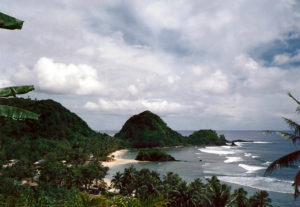
American Samoa
American Samoa has been called one of the world's most untouched marine environments. This is partly because it takes a considerable amount of both time and money to reach it — truly making it a secret dive spot.
Where is it: American Samoa is located in the South Pacific, about 2,000 miles (3,300 km) northeast of New Zealand.
What makes it special: American Samoa consists of a chain of seven islands offering ample dive spots. And because it's so remote, few divers explore these waters, which means you'll be diving sites that few others have seen before. There are some opportunities for shore diving, but you can only reach the best dive sites by boat. Rose Atoll is part of a National Marine Sanctuary. Off Ofu Island you'll find 350 acres of coral reef, and you'll find the world's largest known brain coral, Big Momma, in the waters around the island of Ta'u.
Details: American Samoa does not have the dive-travel infrastructure of more-developed dive destinations. There are a number of dive shops in the area, but they do not run regular diving trips. Most dives will be independent, with no dive guide so you must be comfortable planning and executing your own dives. Plan in advance if you'd like to dive further afield and although most dive shops rent out gear for shore dives, it's best to bring your own.
When to go: You can see humpback whales from July to December, with peak times between September and October. Rainy season is from November through March.
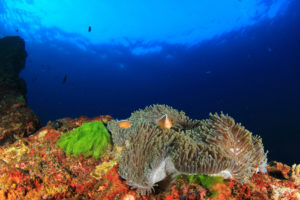
Pohnpei and Kosrae
Of the four islands in the Federated States of Micronesia — Chuuk, Yap, Pohnpei and Kosrae — the latter two are definitely the least-known for diving. But after visiting, you'll want to share the secret with all your dive buddies.
Where are they: Pohnpei and Kosrae are just north of the equator. The islands are halfway between Honolulu and Manila in the Philippines.
What makes them special: Kosrae and Pohnpei have drop-offs, hard-coral gardens, and sandy bottoms with coral bommies, many of which are cleaning stations. The coral is extremely healthy and abundant and you likely be the only divers on your site of choice.
Aside from pristine reefs, Kosrae features the wreck of the Leonora in about 60 feet (18 m) of water. Although not much of the ship remains, the site is great for muck diving. The wreck of the Sansun Maru is the only legacy of WWII operations in the area; it's in about 60 feet of water as well. The Blue Hole is near Kosrae Nautilus Resort, and although visibility isn't as good as on other sites, you'll see lots of juveniles and perhaps some stingrays.
Mantas frequent sites in Pohnpei and whitetip reef sharks are common as well. In Nan Madol (the famous lost city of Pohnpei) you can kayak, snorkel, and sometimes even dive through the deserted streets during high tide.
Details: There are a number of sheltered sites perfect for beginners. Visibility can often be up to 100 feet (30 m) and water temperatures are around 80 to 82 F (27 to 28 C).
When to go: The best diving in Kosrae is from July to September. November to June is usually the rainy season although there is still good diving on the south and west sides of Kosrae during these months.
Pohnpei offers good year-round diving. From December to March it can get quite windy.
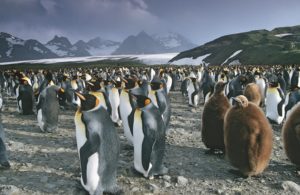
The South Sandwich Islands
The South Sandwich Islands are not your typical tropical-diving destination. This chain of 11 islands is made of volcanic rock, covered in glaciers and colorful snow algae. Few people have explored the underwater world here but doing so is very much worth it.
Where are they: South Georgia and the South Sandwich Islands are a British Overseas Territory. They lie in the Southern Atlantic Ocean, and the nearest inhabited islands are the Falklands, about 810 miles (1,300 km) to the northwest.
What makes them special: Over 3 million penguins inhabit the islands, so you will be sure to spot a few while diving. There are also five different seal species on the islands, so you might witness seal-on-penguin predation. The areas close to the rocks can get a lot of surge but in the shallows, you can spot brightly colored nudis and flatworms.
Details: Unless you've got your own yacht, the only way to get to the Sandwich Islands is onboard a polar cruise. Oceanwide Expeditions is one of the only companies that offers dive expeditions to South Georgia and the Sandwich Islands. The waves around the island can get quite big so make sure your captain is familiar with the area and experienced in large waves. Diving is still very much exploratory and only extremely experienced divers should attempt it in these conditions. Water temperatures average 36 F (2 C).
The post Best Secret Dive Spots appeared first on Scuba Diver Life.
from Scuba Diver Life https://ift.tt/2JxoviX
No comments:
Post a Comment